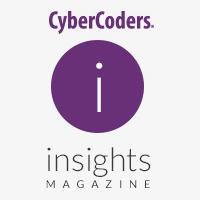Bad LinkedIn users come in two basic forms. One form treats it like Facebook. The other set of bad users are less obvious, with latent, dust-gathering profiles that haven’t been touched since their last hire date. What’s the proper approach to professional social networking in which you avoid looking like a LinkedIn noob?
It’s not that hard. Imagine LinkedIn like a networking mixer in its loosest form, and like a job interview in its most formal. How you should handle your professional online persona lies somewhere between these poles.
1. Avoid political posts and memes. LinkedIn is not Facebook. Many people prefer to keep personal and professional lives separate, and given the divided state of political discourse in the U.S. you can bet half of your audience will be put off by your meme anyway. Not a good look. Unless of course you are a career politician. Remember: there are three no-go conversational areas at work: Sex. Politics. Religion.
2. Avoid glamour shots for profile pictures. The political meme folks are mistaking LinkedIn for Facebook; others mistake LinkedIn for Instagram. Avoid racy profile pictures. If your line of work is modeling, or you’re in creative design, there’s some leeway here. In all other cases, wear business professional attire in profile pictures.
3. Spelling and grammar errors have sent resumes to the paper shredder for decades; that much has not changed in the digital age. Thankfully we save trees with the digital format. The smart play is having a trusted proofreader give your copy a fine comb-through. When self-editing, watch out for company names, and if you’re addressing correspondences to someone in particular over InMail watch out for the name of the individual. Proper nouns are the likeliest to slip past spell check, so stay particularly mindful. John, not Jon. Christie, not Kristie. Polish surnames like Wojciechowski? Do it like a copy editor: save into a custom library and copy-paste throughout.
4. Stop using weasel words like ‘dynamic,’ ‘creative,’ ‘enthusiastic’ because you sound generic. The term weasel words comes from my favorite author on the subject of business writing, Josh Bernoff, who writes the Without Bullshit blog and eponymous handbook.
A weasel word is an adjective, adverb, noun, or verb that indicates quantity or intensity but lacks precision.I cannot recommend Bernoff enough for anyone who writes as much as an e-mail in a professional capacity. The point here is you should treat your LinkedIn account like a cover letter--refrain from jargon and focus on accomplishments, achievements and tangible metrics that hiring managers care about.
5. Don’t let your profile stagnate. Paul McCartney’s credo to Let It Be does not apply to your LinkedIn persona. Regularly updating your on-page content is a good time to be legitimately dynamic; but take a page from Strunk & White and “show don’t tell” how dynamically you do this. Sharing content that you are interested in can indirectly highlight your skills, aptitude and perspective on your industry.
6. January is a great time to sweep through your copy and update all the awesome things you did last year. Pay close attention to the top-fold content--if you don’t know, “top-fold” is a carryover newspaper term, a throwback to when we read paper that folded into a top half and a bottom half. On LinkedIn, it's basically the top half of the screen that's seen first without having to scroll down.
Here’s a good way to start:
- Update your headline
- Update your summary
- Update your skills, projects, volunteer work
- Update your media--a link to your portfolio blog, for example.
- Set up a unique profile URL
8. Co-worker and client recommendations are great for fleshing out a profile. Not to mention, getting along well with coworkers adds feathers your professional cap, and it’s not hard to get someone to vouch that you’re a pleasure to work with. Most of the time all you need to do is ask. That is, unless you’re not great to work with. Which is what having zero recommendations suggests. No need to go overboard--one recommendation per job is perfect.
9. An overly verbose profile is equally off-putting as a barren one. Nobody wants to machete through a drawn out sentence of motivated, team-player, blah-blah. Again, stick to the facts, use numbers to add authority, and maintain a subject-verb-object approach to your sentence structure. Using active verbs over “verbs of being” (is, are, was, had been, etc.) quickly tightens loose writing.


